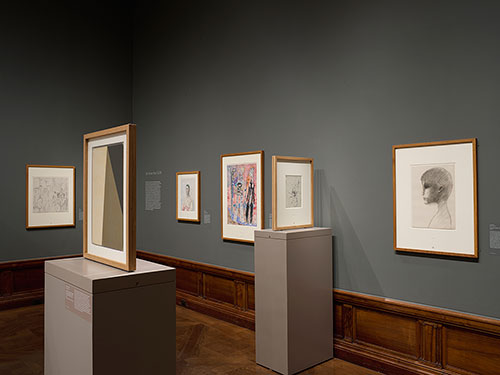World War II ended in Europe with Germany’s surrender in May 1945, which once again reshaped the political borders of the Continent. Established in the eastern portion of Germany in 1949, the German Democratic Republic (GDR) belonged to the Socialist bloc under the influence of the Soviet Union. Having lived through the Nazi era, the war, Germany’s defeat, and the occupation of the Allied forces, artists navigated this new political landscape in different, often highly idiosyncratic ways. While Werner Tübke was preoccupied with the realist mode sanctioned by the state, artists like Carlfriedrich Claus, A. R. Penck, and Gerhard Altenbourg developed alternate aesthetic strategies and engaged with abstraction. The Kupferstich-Kabinett’s collection includes works representing these various artistic approaches. Although during the GDR era no official funds existed for acquiring dissident or nonconformist art, many such works entered the museum’s collection as gifts from artists, collectors, and galleries.
Plan your visit. 225 Madison Avenue at 36th Street, New York, NY 10016.
Plan your visit. 225 Madison Avenue at 36th Street, New York, NY 10016.

